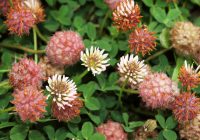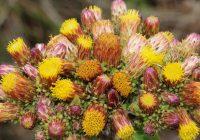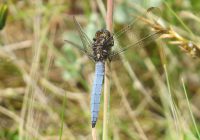Dr Phil Smith’s Wildlife Notes
July 2015
Following June’s drought, July weather returned to “normal” with rainfall sufficient to restore straw coloured lawns and verges to a verdant green, while encouraging a blaze of colourful wild flowers along the coast. Birkdale Green Beach, in particular, produced a wonderful display, Common, Seaside and Lesser Centauries being especially prominent, together with the first of the Grass-of-Parnassus and great swathes of Strawberry Clover, while Ploughman’s Spikenard decorated nearby dune slopes. Although the unsettled weather did little to recharge the depleted water-table, I was delighted to discover about 50 young Natterjack toadlets at one of the new scrapes in the Ainsdale frontal dunes. This may be the only site with successful breeding this year.
July was mainly notable for unprecedented insect records, perhaps linked to the brief heat-wave early on, when temperatures beat the month’s record high in the south and reached about 27o here. On 3rd, Peter Kinsella photographed a male Keeled Skimmer at a scrape in the Birkdale dunes. He was “totally astonished” and “shaking with excitement.” This was only the second sighting in Lancashire & North Merseyside of this mainly peatland species. A week later and only 200m away, an even more extraordinary find was of a female Southern Migrant Hawker. Well photographed by Chris Storey, this dragonfly has only recent colonised south-east England, the previous northernmost record being on the Wash. On the same day, John Dempsey reported a Banded Demoiselle in his greenhouse. There were several extra-limital records of this spectacular insect this summer, including one at Mere Sands Wood on my annual dragonfly walk. Then, on 13th, I spotted a small green creature on Patricia Lockwood’s car in Freshfield. Somewhat incredulous, I identified it as an immature male Oak Bush-cricket, only the second record for Merseyside, John Dempsey having found a female in his garden at Ainsdale in 2010. Surely this trend could not continue; but it did! On 23rd, Trevor Davenport brought me a bush-cricket from his Freshfield garden; I expected another Oak Bush-cricket but it turned out to be a female Speckled Bush-cricket, a mainly southern species not previously recorded in South Lancashire. As it is wingless, the question arises how did it get here? Amazingly, a few days later Trevor found six more individuals on his Dahlias!
Having its only English locality at Birkdale, the Baltic Rush is arguably one of our most important sand-dune plants. As it was last surveyed in 2004, it was due to be checked again, so Patricia Lockwood and I visited all its known sites, measured the size of the colonies and recorded the associated vegetation. Two large populations had been damaged by off-road vehicles in the winter of 2013/14 but, despite this, most of the patches have increased in size with the total area up nearly three-fold. Two extremely rare Baltic rush hybrids also occur on the Sefton Coast, both having been recorded only three times in the wild. Baltic x Soft Rush survives only as transplants in slacks and scrapes, while Baltic x Hard Rush, still has an original “wild” colony at Birkdale, together with several translocated patches. We revisited the localities for both hybrids, one trip involving a Landrover tour of Ainsdale National Nature Reserve in the pouring rain! Most colonies were still there and bigger than in 2004; a good result. As usual, this study will be written up as a scientific paper.
Launched with a Heritage Lottery grant, The Biodiverse Society is a project that aims to get amateur enthusiasts recording flora and fauna on Local Wildlife Sites (LWS), listed by local authorities as the best for nature in their areas. The Sefton Coast has many LWS, one being Queen’s Jubilee Nature Trail, Southport, established by Sefton Council and Birkdale Civic Society in 1991/92 on land reclaimed by the building of Marine Drive in the mid-1970s. Popular with walkers, the site has long been known for its wildlife interest, supporting Sand Lizards and Natterjack Toads, as well as spectacular plantlife. Joining Biodiverse Society staff and volunteers, Patricia Lockwood and I helped to identify an impressive total of 218 flowering plants, 47 being new to the 8ha site. Many are nationally or regionally notable, including good numbers of Dune Helleborines and masses of a favourite of mine, Flat-sedge, one of the most rapidly declining plants in the country. To retain this interest, the site needs managing to control aggressive scrub invasion, especially of Sea Buckthorn; but care is needed as this is one of the best places on the coast for rare hybrid willows.




